kiyoshi awazu
︎Art, Graphic Design
︎ Ventral Is Golden
kiyoshi awazu
︎Art, Graphic Design
︎ Ventral Is Golden
︎ Ventral Is Golden
"The great path has no gates. Thousands of roads enter it. When one passes through this gateless gate, she walks freely between heaven and earth.“
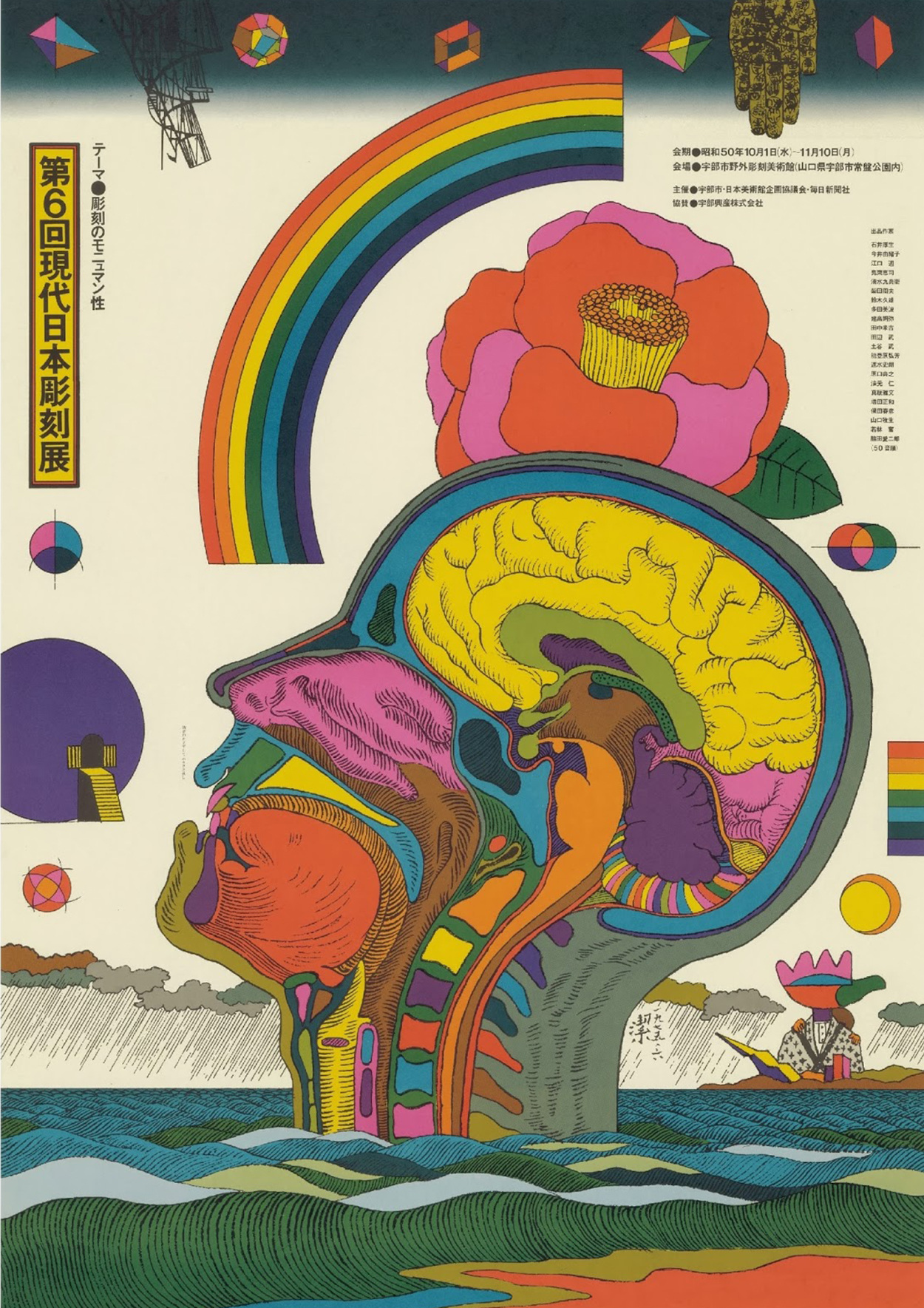
For pioneering, self-taught visual artist, Kiyoshi Awazu, who laid some of the foundations for a new Japanese Graphic Design aesthetic in the years following World War II,
believed that “the designer’s mission is to extend the rural into the city, foreground the folklore, reawaken the past, summon back the outdated.”
With such an unrefined style set against the backdrop of a new conservative city consciouness, Awazu had his feet in two worlds, moving freely between methods of painting, poster and book design, on subjects ranging from architecture, music, film and performance, which gave Awazu the ability to augment and articulate traditional Japanese painting techniques with modern symbolism, peering beyond convention and into other worlds. A testament to the dexterity of his visual language.
![]()
With such an unrefined style set against the backdrop of a new conservative city consciouness, Awazu had his feet in two worlds, moving freely between methods of painting, poster and book design, on subjects ranging from architecture, music, film and performance, which gave Awazu the ability to augment and articulate traditional Japanese painting techniques with modern symbolism, peering beyond convention and into other worlds. A testament to the dexterity of his visual language.

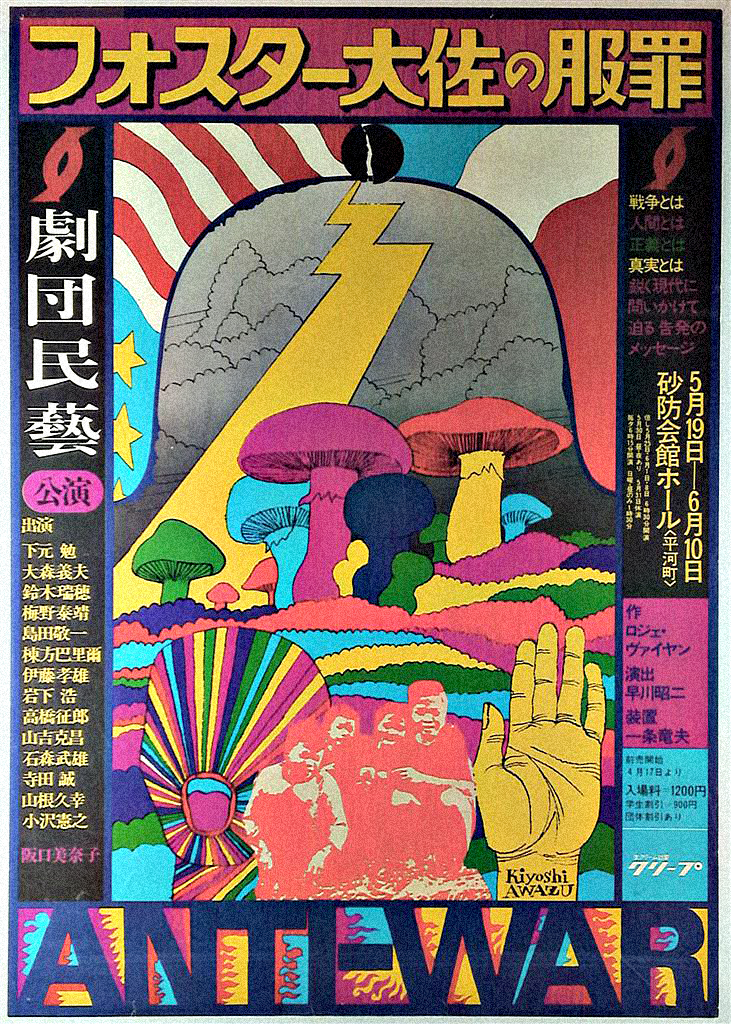
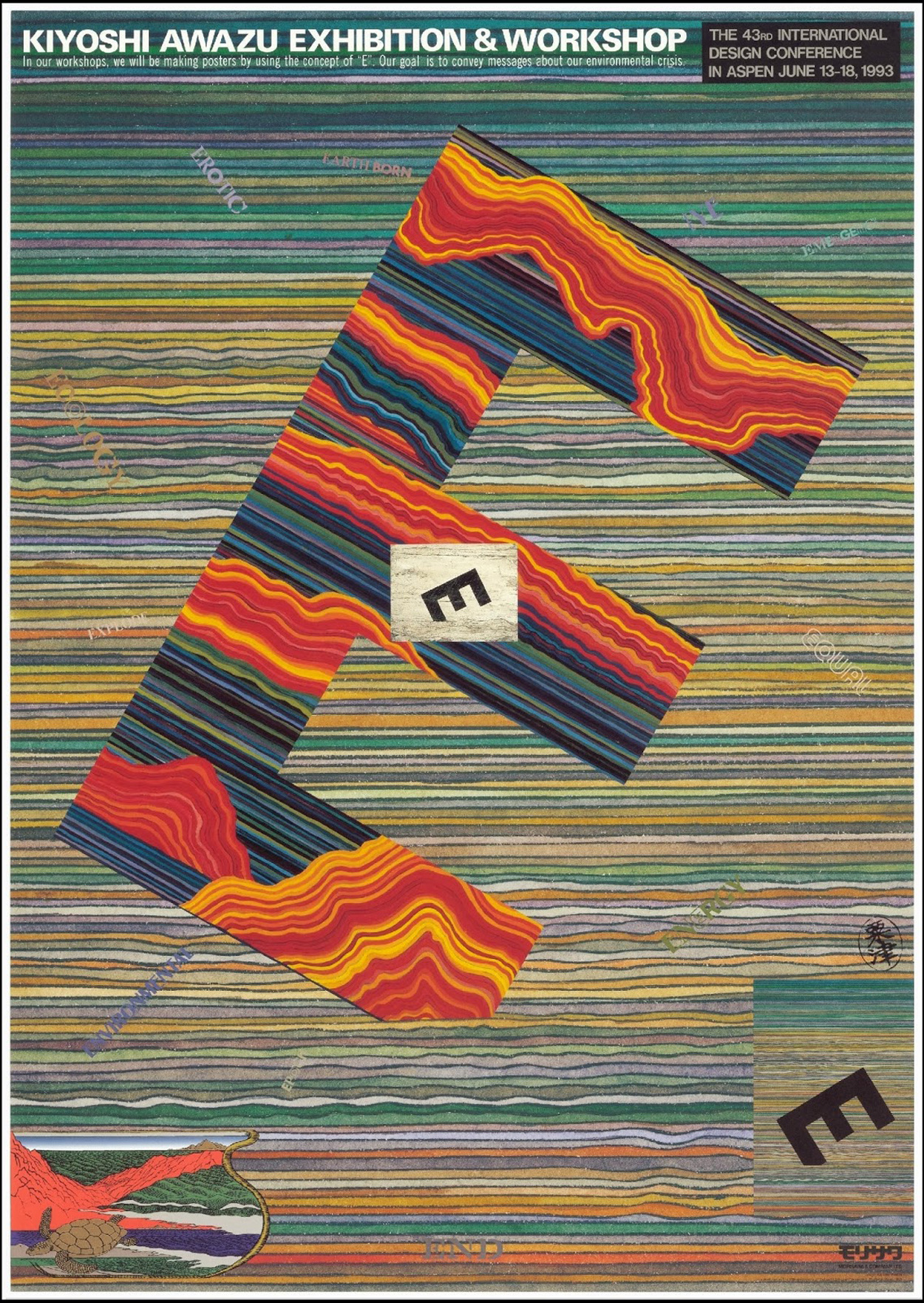
Imbued with expressive, hand-drawn surrealist motifs, Awazu rendered visual koans from his colourful, sensory compositions, often times posing questions in typical zen poetics during his self-reflective design process:
“Whose faces were those?
Are those clouds, or the sky reflected in water?
A leaf vibrates and disappears."
Explaining his artistic process further, Awazu explained that "I must have been dreaming or something. I started to draw a circle and the circle became an eyeless face. The surroundings of the face are lines of a stratum, meteorological contour lines. The face of a girl or an old lady... rose before me and flew away. The heads of Picasso, Sharaku, and Eisen came across my mind but they disappeared, too many images come and go. Faces that I don’t recognize come and go...”
![]()
“Whose faces were those?
Are those clouds, or the sky reflected in water?
A leaf vibrates and disappears."
Explaining his artistic process further, Awazu explained that "I must have been dreaming or something. I started to draw a circle and the circle became an eyeless face. The surroundings of the face are lines of a stratum, meteorological contour lines. The face of a girl or an old lady... rose before me and flew away. The heads of Picasso, Sharaku, and Eisen came across my mind but they disappeared, too many images come and go. Faces that I don’t recognize come and go...”

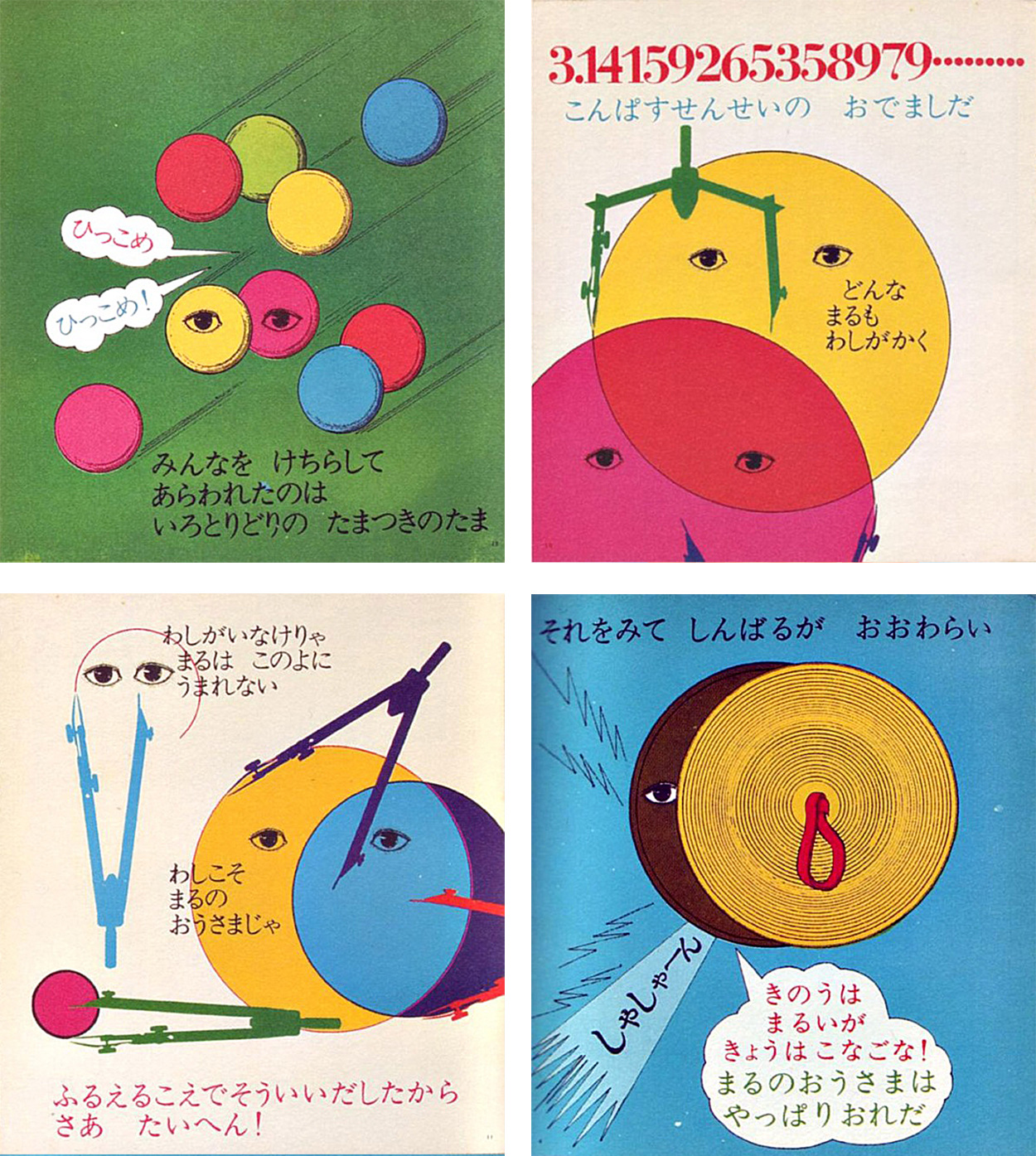
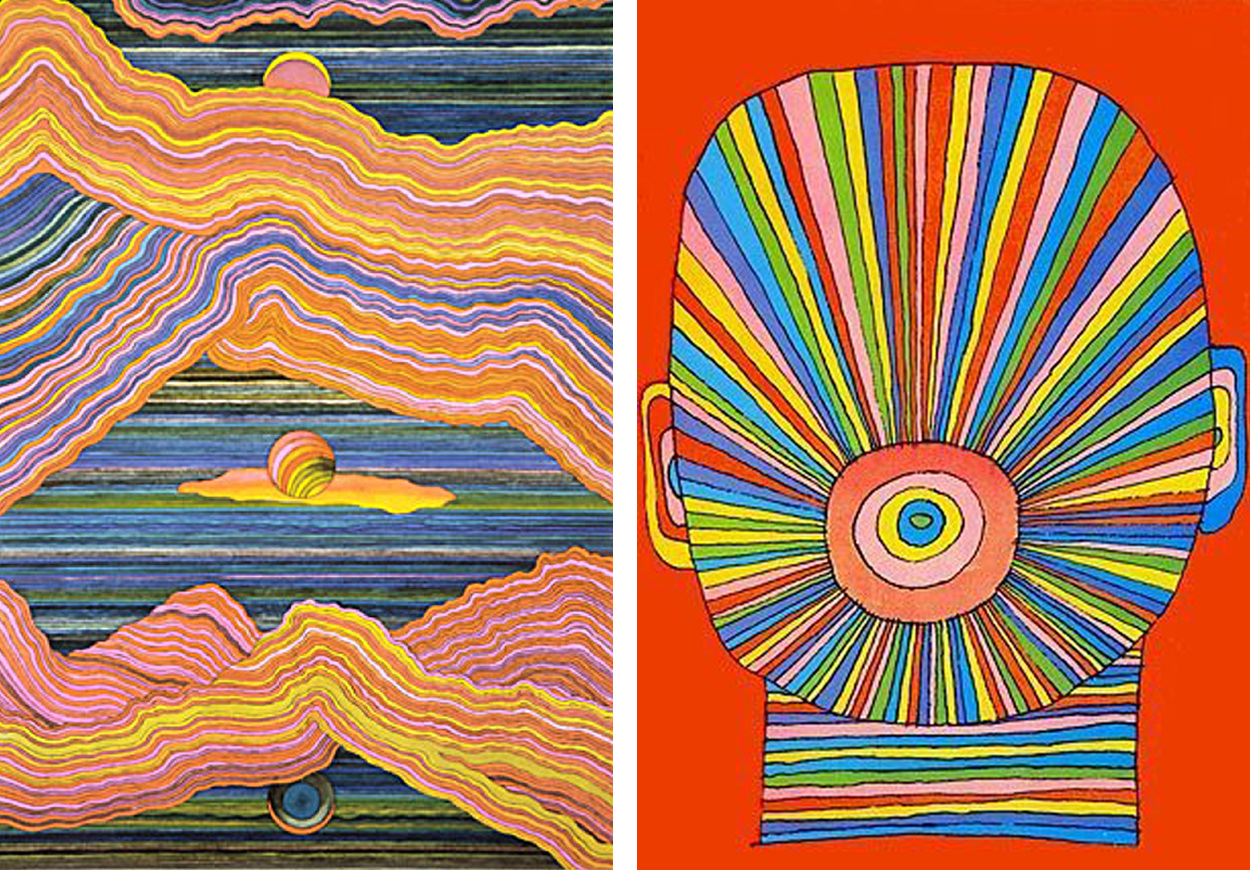
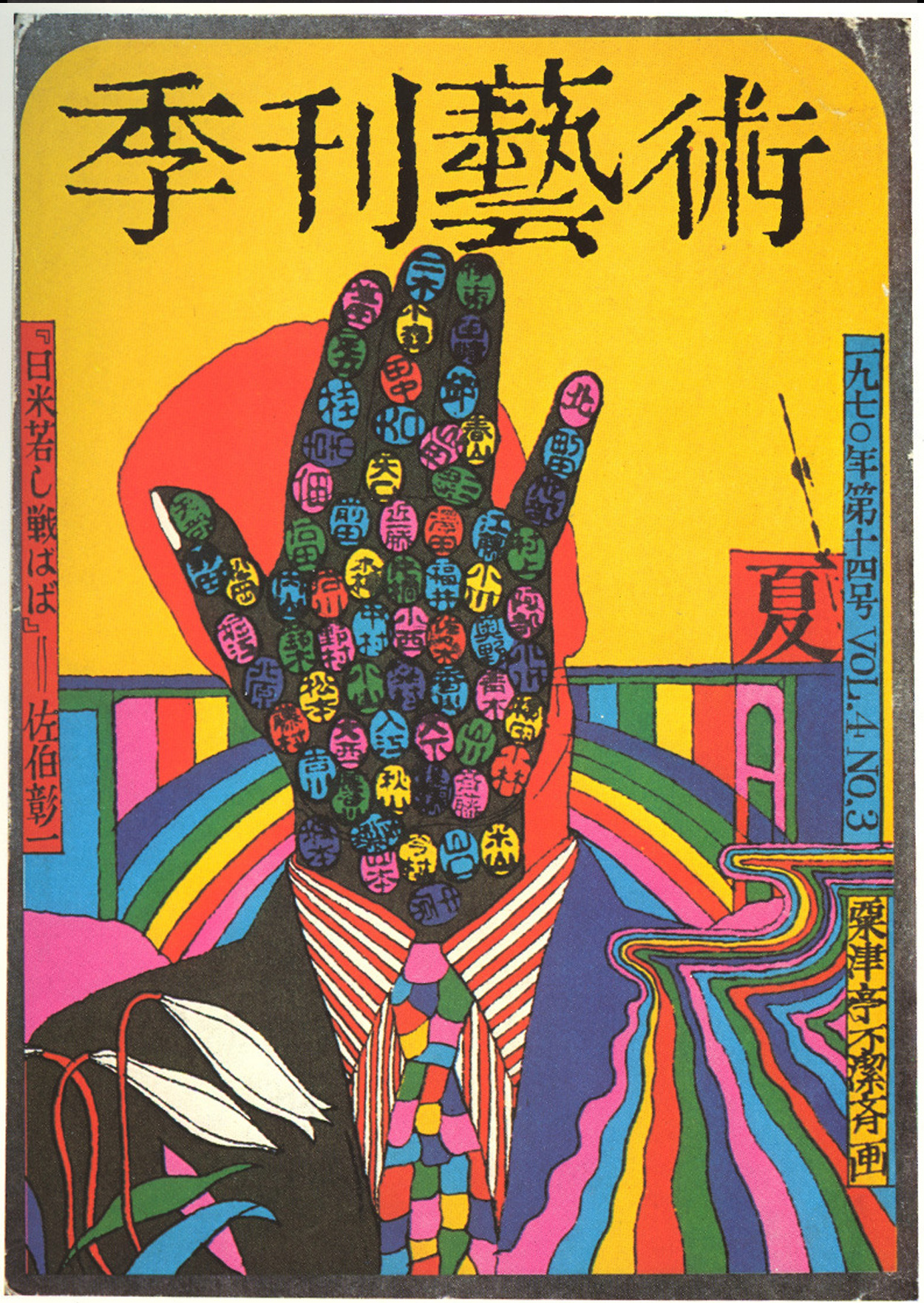
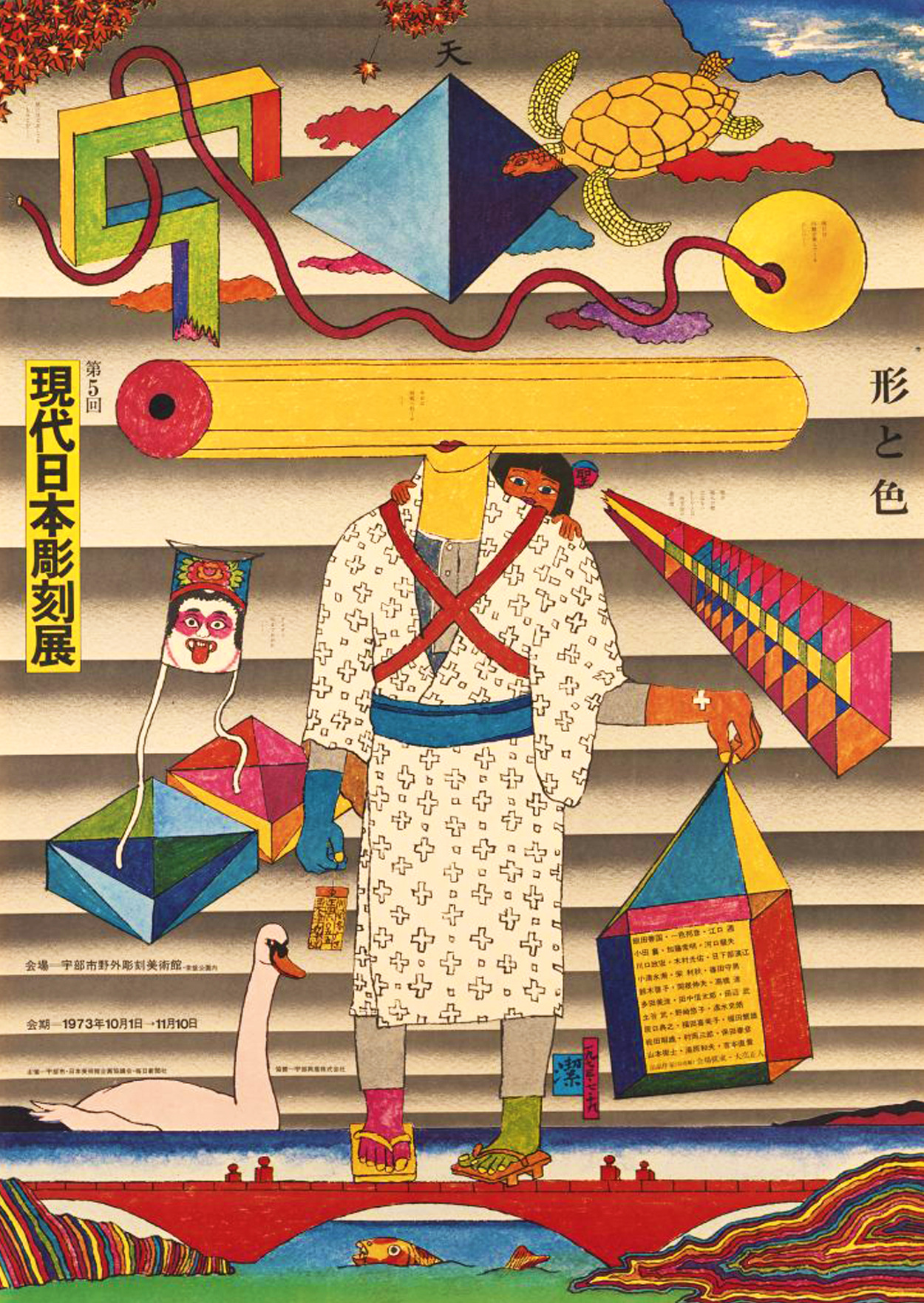



Often drawing from an archive of spiritual archetypes that link all human experiences in the dimension of monomyth, the visual koans (poetic zen paradoxes) evoked by the spacial awareness of Awazu’s graphic elements, imbued his designs with a Japanese cultural inflection whilst not becoming prisoner to the limitations of its lexicon.
“In his essay “Tracing the Graphic in Postwar Japanese Art” for the catalogue accompanying MoMA’s 2012–13 exhibition Tokyo 1955–1970: A New Avant-Garde Michio Hayashi writes of Awazu’s attitude towards his work: “… ‘instructions’ (shiji) were beginning to pervade urban space by means of modern design […] the city was regulating people’s behavior and manners down to the smallest detail […] Awazu sought to create ‘gaps/fissures/openings’ (sukima) in the increasingly regulated and flattened urban plain.” Hayashi explains that Awazu’s approach rebuked modernist design ideals and instead engaged with indigenous culture, popular symbols, and untidy visuals.” (Hyperallergic)
“In his essay “Tracing the Graphic in Postwar Japanese Art” for the catalogue accompanying MoMA’s 2012–13 exhibition Tokyo 1955–1970: A New Avant-Garde Michio Hayashi writes of Awazu’s attitude towards his work: “… ‘instructions’ (shiji) were beginning to pervade urban space by means of modern design […] the city was regulating people’s behavior and manners down to the smallest detail […] Awazu sought to create ‘gaps/fissures/openings’ (sukima) in the increasingly regulated and flattened urban plain.” Hayashi explains that Awazu’s approach rebuked modernist design ideals and instead engaged with indigenous culture, popular symbols, and untidy visuals.” (Hyperallergic)
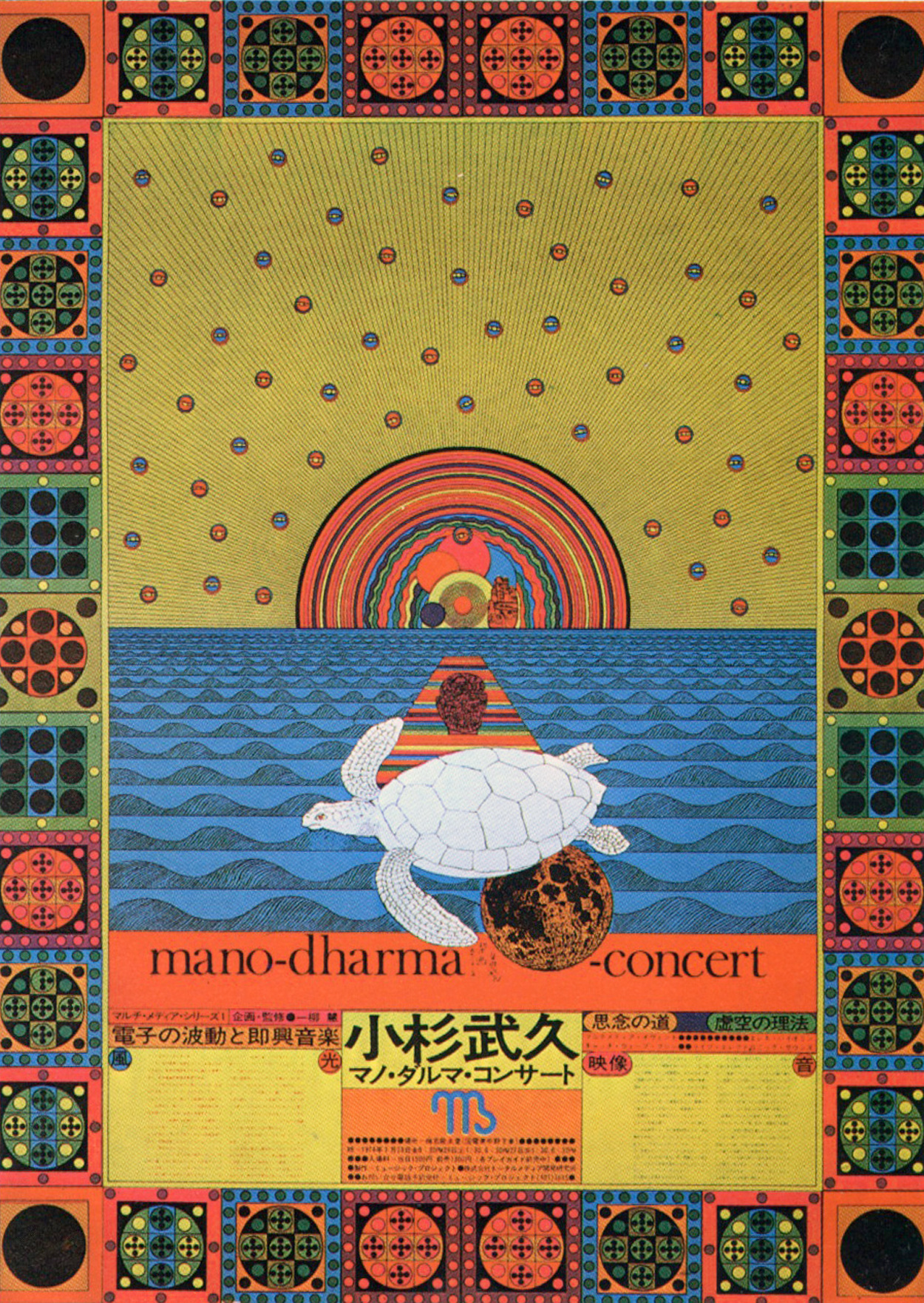
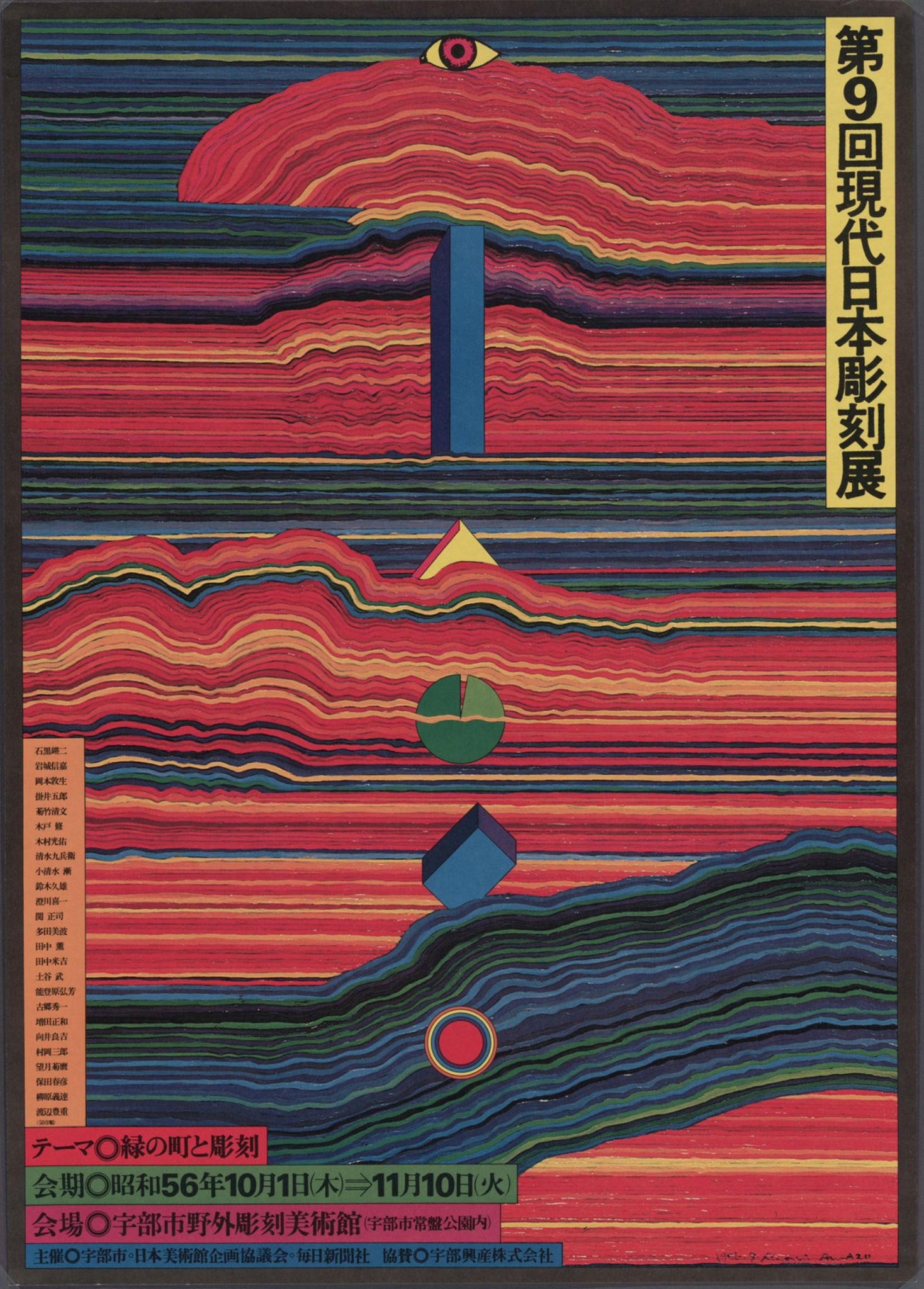
The gaps, fissures and openings explored in his works were the method of foregrounding the folklore, to remember the world of the folk, whose physical sciences end in Ecology and the wisdom of earthly relations, so eloquently expressed in the Zenrin-kushū (禪林句集,"Anthology of Passages from the Forests of Zen”), poems and koans on meditation, where one observation reads:
“Reiki o o hiku” (靈龜曵尾 "The spirit turtle sweeps its tail") which is described as a variant of the phrase “Ato o haratte ato shōzu” (拂跡跡生 "Erasing traces creates traces").
Forming, unforming, unforming, forming... returning mind to the source of its arising. Writing the mind onto the wind.
In another Zen koan entitled ‘Daizui’s Turtle’:
A monk saw a turtle in the garden of Daizui’s monastery and asked the teacher, “All beings cover their bones with flesh and skin. Why does this being cover its flesh and skin with bones?”
Master Daizui took off one sandal and covered the turtle with it.
One lays the burden of a man-made construct on the mystery before him, and then asks, what is the reason of this? Mind forms, then sandal forms.
Now, how does one pass through the gateless gate?
“Reiki o o hiku” (靈龜曵尾 "The spirit turtle sweeps its tail") which is described as a variant of the phrase “Ato o haratte ato shōzu” (拂跡跡生 "Erasing traces creates traces").
Forming, unforming, unforming, forming... returning mind to the source of its arising. Writing the mind onto the wind.
In another Zen koan entitled ‘Daizui’s Turtle’:
A monk saw a turtle in the garden of Daizui’s monastery and asked the teacher, “All beings cover their bones with flesh and skin. Why does this being cover its flesh and skin with bones?”
Master Daizui took off one sandal and covered the turtle with it.
One lays the burden of a man-made construct on the mystery before him, and then asks, what is the reason of this? Mind forms, then sandal forms.
Now, how does one pass through the gateless gate?
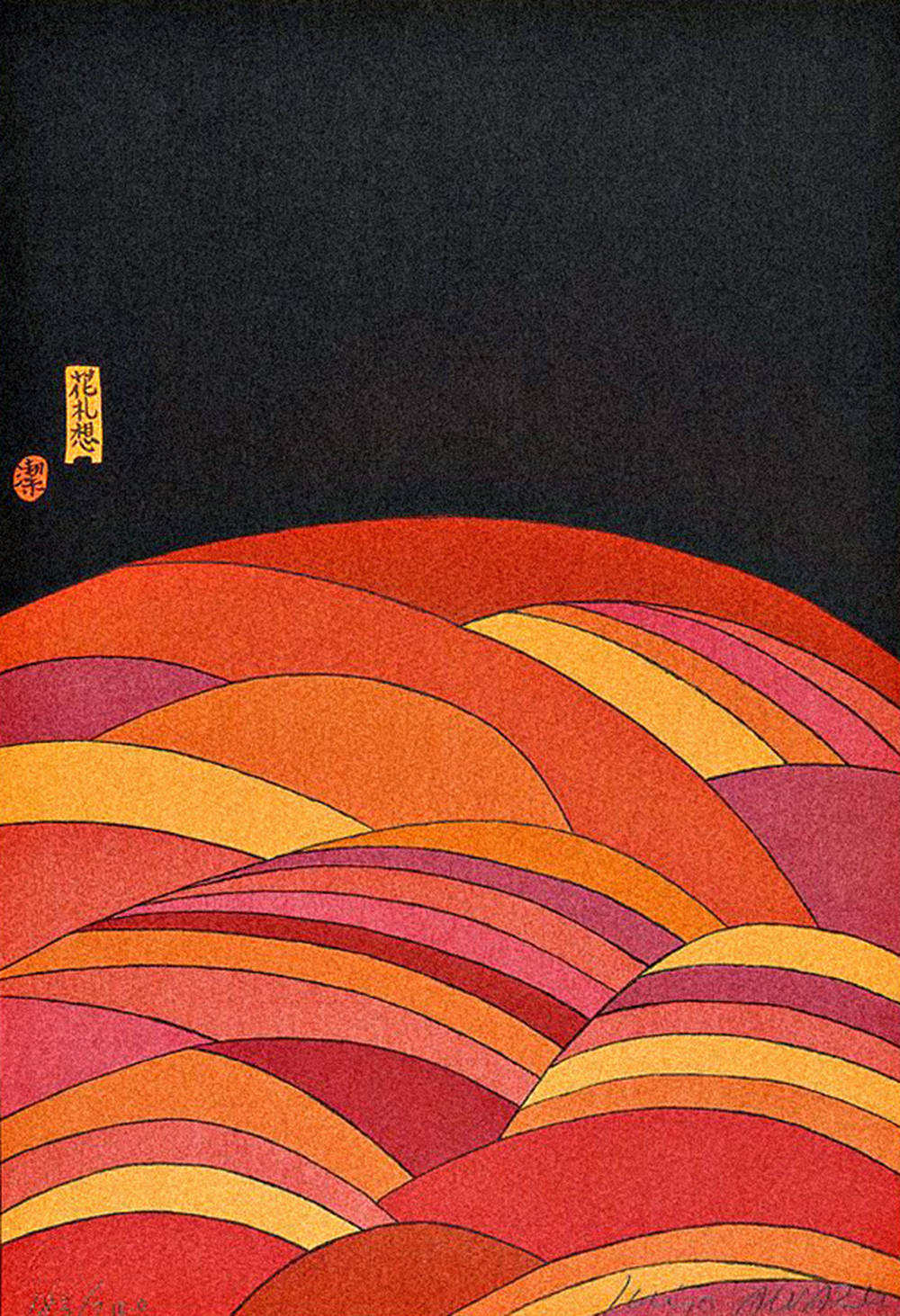
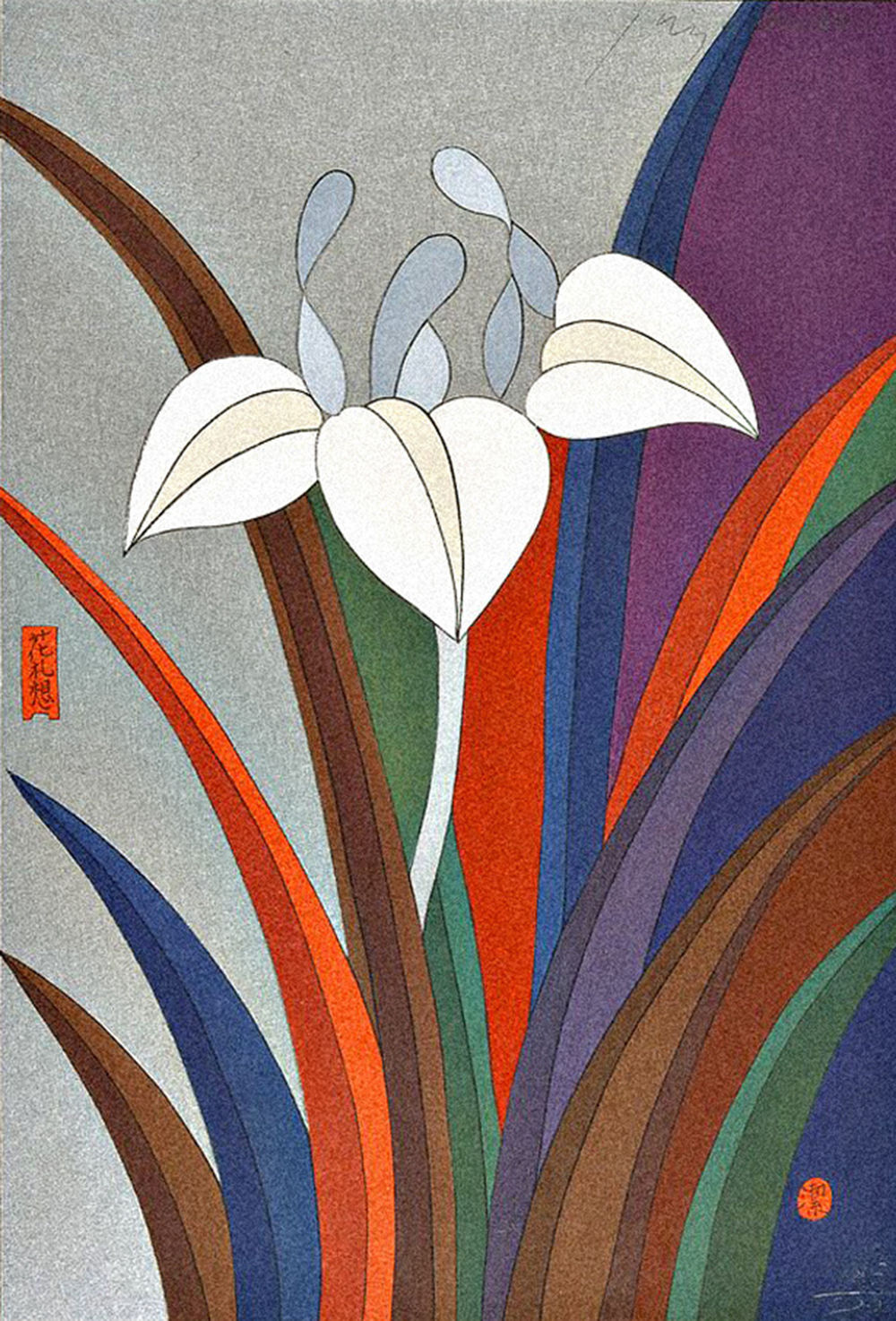


Further Reading ︎
50 Watts, article.
Hyperallergic, article.
Tokyo Reporter.
Escape Into Life, article.
Mind Writing Slogans, Allen Ginsberg.
Fantasies on Japanese Playing Cards, collection.